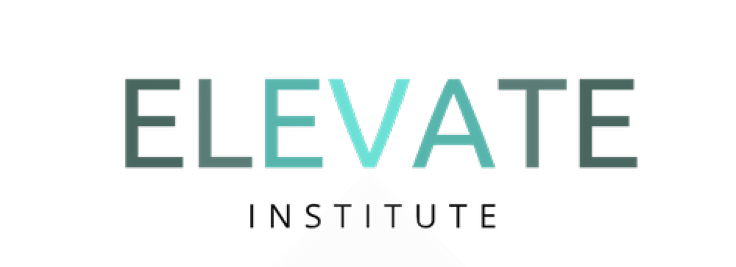Myths About Exercise
It’s essential to move the body, yes. It’s even more essential to consider a healthy framework.
Let’s talk myths about exercise. Moving your body is essential, but you should do it within a healthy framework. You might remember gym class or having a personal trainer, and the shouts of coaches trying to motivate you, such as “push harder” or “no pain, no gain.” These can be great for someone who is feeling good, can repair themselves after being pushed, and doesn’t have many symptoms. But if you’re someone who has a cycle of wanting to work out, getting injured, needing to rest, and then starting over, keep reading. You might be working under one or many of the myths below.
MYTH #1. Strong muscles and a beautiful body indicate you are in good health.
Myth #1: Strong muscles and a beautiful body mean you are healthy. While it’s essential to care for your body, health goes beyond muscles and body shape. Don’t judge yourself or others based on how much or how many exercises you do. Human beings need strength to lead a healthy lifestyle, and that’s about it. Physical strength is only one part of health and not an important one.
This myth about exercise is prevalent in today’s society, where fitness models with perfect bodies dominate social media. People often associate good looks with good health, but that’s not always the case. Fitness and health are two different things, and you don’t have to look like a bodybuilder to be healthy. The important thing is to find an exercise routine that you enjoy and that makes you feel good, both physically and mentally.
MYTH #2. A healthy heart and healthy arteries indicate you are healthy.
“Myth #2: A healthy heart and healthy arteries mean you’re healthy. This is a recent trend that has gained popularity among fitness enthusiasts. However, it’s important to understand that having a healthy heart and arteries doesn’t necessarily equate to overall health. While exercise can certainly help improve circulation and cardiovascular health, it’s crucial not to overdo it.
Excessive exercise can actually have a negative impact on the cardiovascular system, and a narrow-minded focus on cardiovascular fitness is not the key to optimal health. It’s important to strike a balance between different types of exercise and not to overlook other crucial aspects of health, such as nutrition and stress management. So, don’t fall for the myth that a healthy heart and arteries are the only indicators of good health. Keep in mind the various Myths About Exercise and focus on taking a holistic approach to your well-being.”
MYTH #3. Exercise rebuilds your body.
Myth #3 is that exercise rebuilds the body. While exercise can help with blood circulation, oxygenation of tissues, and can aid in rebuilding in this sense, it is not the only factor that determines the body’s rebuilding ability. Excessive exercise can put excessive stress on the heart, arteries, joints, and glands, leading to a negative impact on the body. Instead, healing and rebuilding require a proper balance of nutrients and rest.
While exercising a little when you feel well can be beneficial, it’s crucial to understand that exercising excessively to feel better is not a healthy approach. It is important to understand that exercise is not a cure-all and should not be over-relied on. These are some of the Myths About Exercise that one should be aware of before starting any fitness routine.
MYTH #4. Exercise cannot be harmful.
Myth #4 suggests despite the many benefits of exercise, it’s important to be aware that it can also be harmful if done excessively. This is one of the most overlooked myths about exercise. While it’s true that regular exercise can help prevent chronic diseases, excessive exercise can lead to injuries, burnout, and even a shortened lifespan.
Marathon runners, for example, may be in great shape for several years, but their bodies may eventually give out due to the physical stress of running long distances. Additionally, many professional athletes, who are often seen as the pinnacle of fitness and health, have tragically short lifespans compared to the general population. This is a reminder that moderation is key when it comes to exercise, and that we should always listen to our bodies and avoid overdoing it.
Here are some guidelines for exercise:
1. Don’t use your pulse as your only guide. Many people are not that healthy, in spite of a normal pulse rate.
2. Follow common sense. Don’t push past exhaustion. Listen to yourself before you listen to any coaches, experts or friends. Go at your own pace. Do as much exercise as you need to keep yourself fit for your lifestyle and that is all. Opt for less exercise of a vigorous nature if in doubt.
3. Don’t use exercise as a crutch or drug. If you are running to get away from your problems, you are misusing exercise. If you are addicted to exercise, work toward getting unhooked, as you would with any other addiction. Addiction is not health, even if it makes you look and feel fantastic while you do it.
4. If you skip exercise for a few days, you should still feel very well. If you skip your exercise and begin to feel depressed, exhausted, constipated or irritable you are probably using exercise as an adrenal whip. Cut down slowly and look into other reasons why you are feeling this way.
5. A tissue mineral analysis performed by a lab that does not wash the hair, and interpreted by someone who understands it well, can often tell you if you are overdoing exercise.
The properly performed and interpreted hair mineral test will often indicate adrenal exhaustion. Only very gentle exercise is acceptable and helpful for these people. Vigorous exercise of any kind in this condition only slows regeneration and is quite dangerous for your health and healing.
6. Involve your whole body. Exercise outside in the fresh air whenever possible. Flexibility is as important as strength and endurance. Stretching and deep breathing are vital for health.
Recommended Exercises
Walking, swimming, bicycling, and gardening are all excellent activities. Long-lived people in the world frequently work outside, but not strenuously. Meditative exercises such as yoga or tai chi are also acceptable, but be cautious because many people are injured in these classes as a result of peer pressure to keep up with their classmates’ performance rather than focusing on where they are as individuals. The teacher must walk around the entire class at all times to ensure that the students are performing the poses correctly. This is critical in order to avoid injuries. Walking is often preferable because it is safer.
There are several myths about exercise that have been debunked by scientific research. It’s important to understand that there is no one-size-fits-all approach to exercise, and what works for one person may not work for another. By dispelling these myths, we can pave the way for a more effective and enjoyable exercise routine. So don’t let these myths hold you back from reaching your fitness goals, and remember to consult with a qualified professional to design an exercise program that is safe and tailored to your individual needs.






